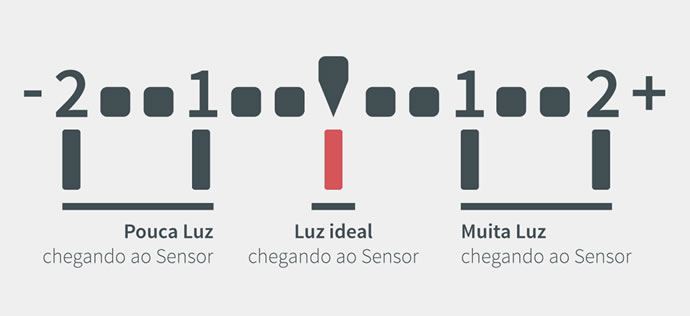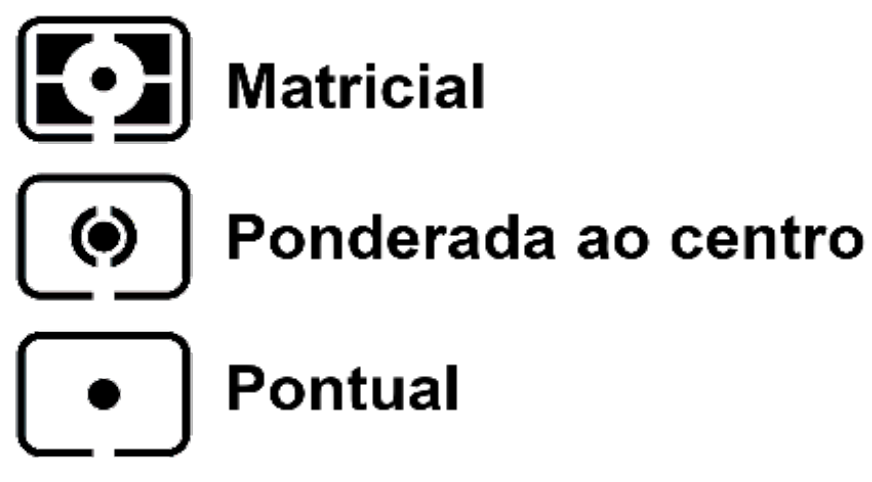Photometry
At first, inside the camera, there is a measurement system called a photometer. This system known as TTL (through the lens) is responsible for reading the light input through the objective and, therefore, responsible for calculating the crossing of information between the aperture of the diaphragm versus the shutter exposure time, in addition to the sensitivity ISO, as seen in the exposure triangle.
However, if you haven't read it, go back to the previous articles on the exposure triangle.
Built-in or External
Photometers can be built-in or external. The photometers built into the cameras calculate the light that is reflected by the object to be photographed, taking into account the light that will be lost as it passes through the objective. External photometers, on the other hand, work with light incident on the scene, based on the sensor's sensitivity settings established by the photographer. The main difference from the built-in photometer is that you don't have to worry about the color of the scene or the objects independently.
Photometer
In digital camera viewfinders, it appears as a scale that varies for negative (left) and positive (right) numbers, with in the center marking what is considered a balance during shooting.

The meter's marker moves linearly in this range of numbers. Thus, negative values indicate that there is little light reaching the sensor, causing darker, underexposed photos. Meanwhile, positive numbers show that the sensor is getting more light than it needs to register the subject, resulting in ever brighter, or overexposed, photos.
Settings
That way, when operating the camera in manual mode, you'll compensate for metering by adjusting aperture, shutter speed and ISO sensitivity, when necessary, seeking the desired result.
To measure the light from the composition, the objective is directed to find the point where the photographer wants to work. The measurement of this illumination is carried out totally or partially.
Types of light measurement
Depending on the model and brand of camera, you will have more or less sophisticated photometers that measure the necessary light by dividing the image into zones. Thus, there are three most used measurement models: matrix, central and punctual. When used in automatic mode, the photometer automatically adjusts the aperture of the diaphragm.
Modes:
MATRIX: Light metering is done for all points in the composition at once.
CENTRAL: The measurement is made as a whole, prioritizing a central point chosen by the photographer.
ONE-OFF: The measurement is carried out from a single target in the scene, ignoring other areas.
Nomenclatures
Underexposed = dark photos
Overexposed = very clear photos
balanced photos: definition of colors and highlighting shapes, pleasing to the eye
Constant experimentation with photography is recommended, however, when testing light measurement modes, you may want to consider some important factors. For large scenes, where all parts of the composition are highlighted (such as landscapes and groups of people), you can use matrix metering. For scenes with color highlights where lighting is important to the entire composition but with emphasis in the central area of the composition, try center (weighted) metering. However, if you want to photograph subjects that should appear to stand out from the background, prioritizing only the main subject lighting, try using spot metering.

Conclusion
The ideal light measurement, therefore, is the one closest to the central point, as long as the result is pleasing to the photographer's eyes and allows the visualization of all the desired details in the composition. However, it is noteworthy that who decides the result is the photographer. There are styles of photographs that exploit overexposure and on the other hand those that exploit underexposure such as high key and low key photos.
Anyway, we will meet in the next article on photographic technique.
So, did you like the article on Photometry and want to contribute a coffee of thanks? Make your contribution using the QR Code below. Help the Foto Blog that helps you. Any value is welcome! A coffee is R$2 here, for example.

Related articles
| Make long exposure | Types of cameras | Light the principle (part 1) | Light the principle (part 2) |
Other links
| | Photo Accessories | | Photo | | Photography | | Online Gallery | | FotoBlog | | Photometry | | Photographic Technique | Color Photographic Technique | | Quality of a photo | | What is Photography? | | The Role of the Sensor | | Pricing | | Diaphragm Exposure Triangle | | Lens Types | |





